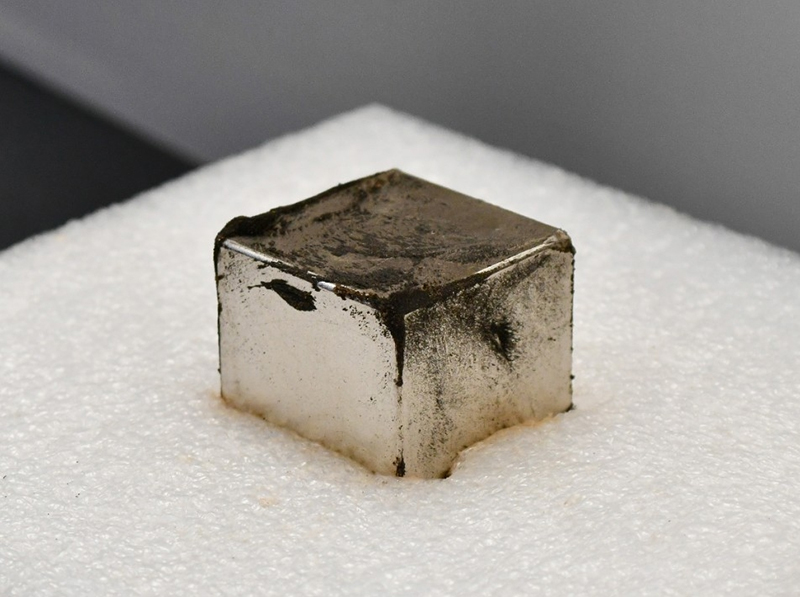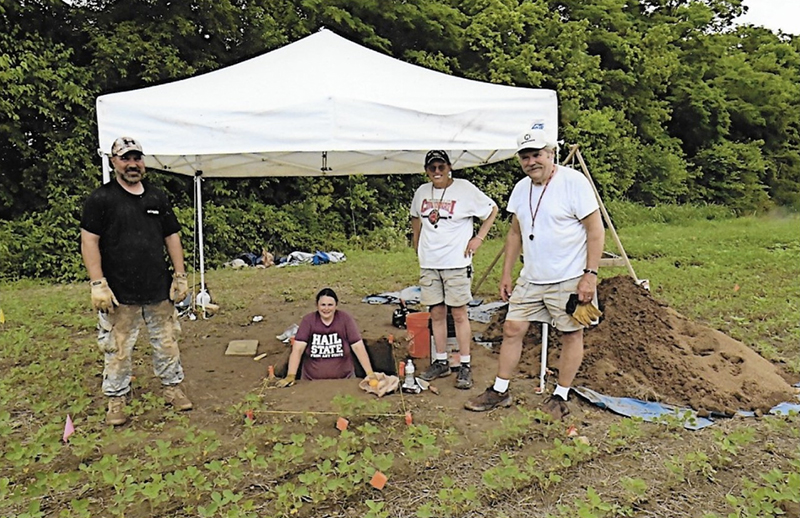More than 1500 years ago, a vast culture known as the Hopewell tradition (or Hopewell culture) stretched across what is today the eastern United States.
The cause of the culture's decline has long been debated, with war and climate change two of the possibilities, but now a new avenue of inquiry has opened up: debris from a near-Earth comet.
Researchers working across 11 different Hopewell archaeological sites covering three states have found unusual concentrations of iridium and platinum in their digging – telltale signs of meteorite fragments. Meanwhile, a charcoal layer in the sediment suggests an intense period of high heat.
The hypothesis is that debris from a passing comet may have struck close to the Ohio Hopewell communities, causing an airburst that would have profound and potentially devastating effects on the local environment.
Signs that the people collected meteorite fragments and incorporated them into their jewelry and instruments, along with hints of a calamity in local folklore, suggest there was certainly some significant event – one that the researchers suggest may have contributed to a significant upheaval in the social sphere.
 A magnet holding tiny micrometeorites collected from the sediment samples. (Michael Miller)
A magnet holding tiny micrometeorites collected from the sediment samples. (Michael Miller)
There are other clues too: the Hopewell built a comet-shaped mound near the epicenter of the meteorite rain region, which is today called the Milford Earthworks. What's more, a calamitous event way back in history is still spoken about today amongst descendant tribes.
"The Miami tell of a horned serpent that flew across the sky and dropped rocks onto the land before plummeting into the river," says anthropologist Kenneth Tankersley from the University of Cincinnati in Ohio. "When you see a comet going through the air, it would look like a large snake."
"The Shawnee refer to a 'sky panther' that had the power to tear down forests. The Ottawa talk of a day when the Sun fell from the sky. And when a comet hits the thermosphere, it would have exploded like a nuclear bomb."
The micrometeorites left behind in such events can reveal a chemical fingerprint, the researchers say.
"Cosmic events like asteroids and comet airbursts leave behind high quantities of a rare element known as platinum," Tankersley says.
"The problem is platinum also occurs in volcanic eruptions. So we also look for another rare element found in non-terrestrial events such as meteorite impact craters: iridium. And we found a spike in both iridium and platinum."
The team used techniques including scanning electron microscopy and energy dispersive spectrometry to identify the elements in the sediment they collected. The meteorite fragments were unusually highly concentrated compared with other locations and times.
At the same time, the material was also dated using radiocarbon and typological dating. The researchers estimate that the event took place between 252 CE and 383 CE. Historical records show that 69 near-Earth comets were documented across the same time period.
 The research team on site. (Larry Sandman)
The research team on site. (Larry Sandman)
The explosion from space would have set off fires covering some 9,200 square miles (some 23,828 square kilometers), this latest study suggests.
Further studies are now planned to get a better idea of how the shower of meteorites might have impacted such a widespread area. The botanical landscape of the time can be analyzed through careful observation of the pollen trapped in sediment, for example.
However, the scientists admit that there are still a lot of questions that remain unanswered – peering back through 1,500 years of history isn't particularly easy. There's plenty still to explore in these particular locations across this particular time period.
"It's hard to know exactly what happened," says paleoecologist David Lentz from the University of Cincinnati. "We only have a few points of light in the darkness. But we have this area of high heat that would have been catastrophic for people in that area and beyond."
The research has been published in Scientific Reports.
#Humans | https://sciencespies.com/humans/a-cosmic-airburst-may-have-devastated-a-vast-native-american-culture-1500-years-ago/
No comments:
Post a Comment